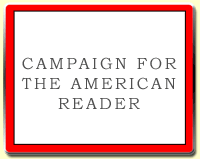 Andrew Miller was born in Bristol in 1960. His first novel, Ingenious Pain, was published in 1997 and won the James Tait Black Memorial Prize for Fiction, the International IMPAC Dublin Literary Award and the Grinzane Cavour prize in Italy. He has since written five novels: Casanova, Oxygen, which was shortlisted for the Whitbread Novel Award and the Booker Prize in 2001, The Optimists, One Morning like a Bird, and Pure.
Andrew Miller was born in Bristol in 1960. His first novel, Ingenious Pain, was published in 1997 and won the James Tait Black Memorial Prize for Fiction, the International IMPAC Dublin Literary Award and the Grinzane Cavour prize in Italy. He has since written five novels: Casanova, Oxygen, which was shortlisted for the Whitbread Novel Award and the Booker Prize in 2001, The Optimists, One Morning like a Bird, and Pure.One of his top ten historical novels, as told to the Guardian:
I, Claudius by Robert GravesRead about the other novels on the list.I'm told that Graves wrote the Claudius novels in order to raise a little money. Whatever the motive – and writers should never be entirely believed when they speak of such things – the Claudius novels are insanely readable tales of violence, incest and family life in the days of the Roman Imperial high noon. Everyone knows the brilliant TV adaption with Blessed and Jacobi and Sian Phillips but perhaps not everyone has read the novels. They should.
I, Claudius also appears on Mark Malloch-Brown's list of his six favorite novels of empire, Annabel Lyon's top ten list of books on the ancient world, Lindsey Davis' top ten list of Roman books, and John Mullan's list of ten of the best poisonings in literature.
--Marshal Zeringue












































